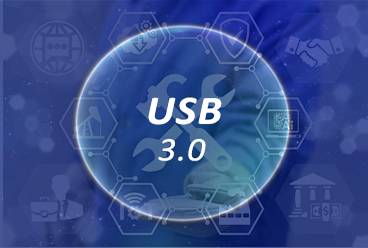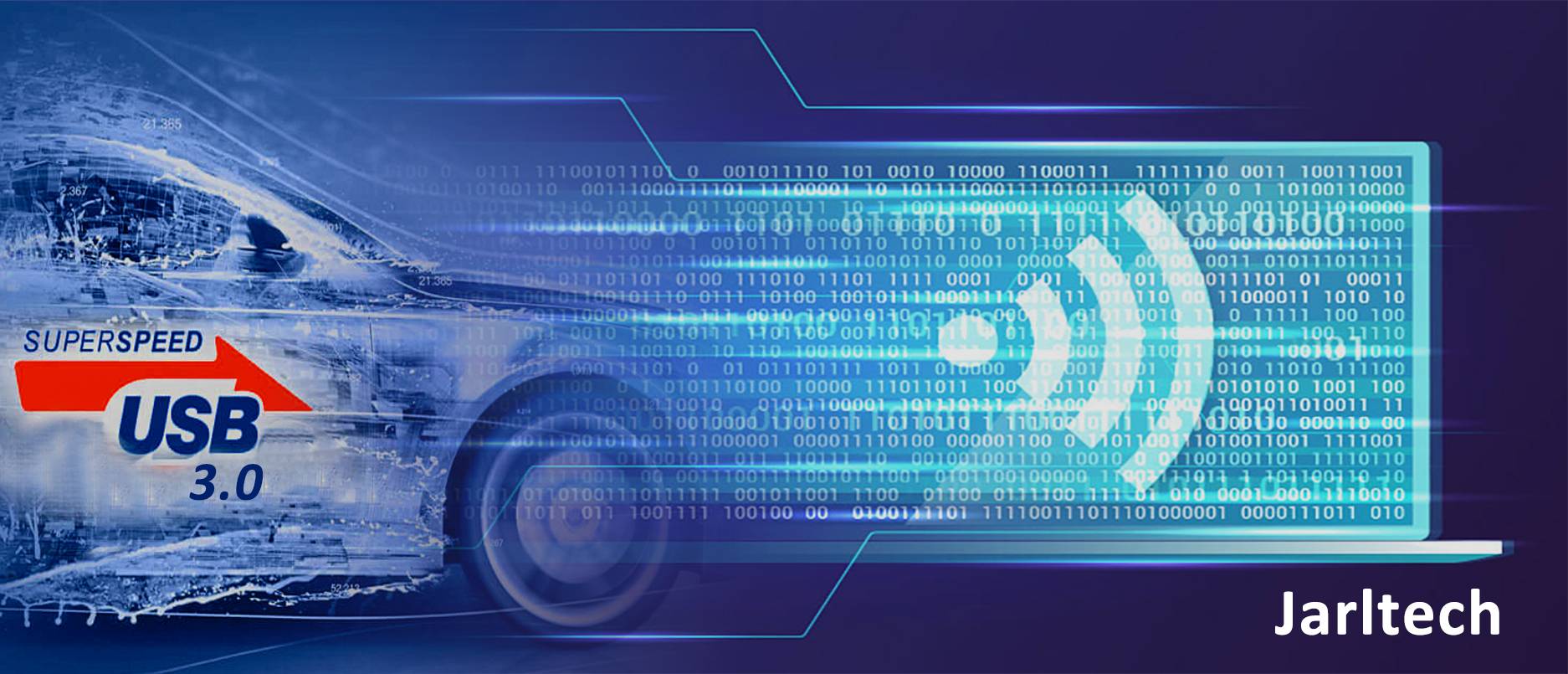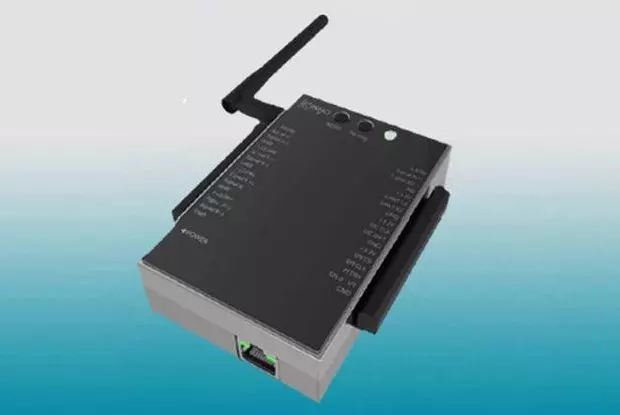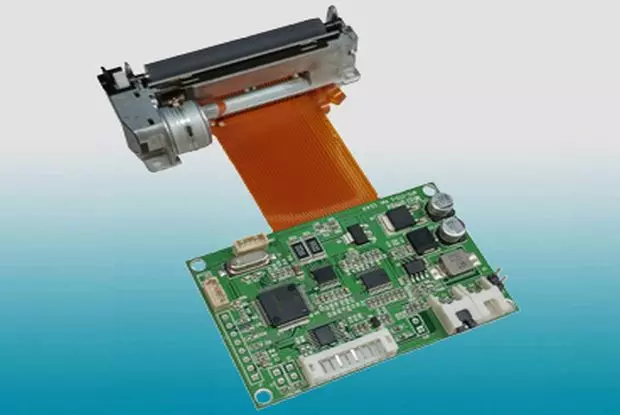SuperSpeed USB 3.0
Universal Connection for Next-Generation Consumer Applications
USB 3.0 maintains the same interface as USB 2.0 for end-users while significantly increasing bandwidth.
Jarltech's USB 3.0 includes a dual bus architecture consisting of USB 2.0 and a recently developed SuperSpeed component.
Overview
The Universal Serial Bus (USB) still dominates the interfaces of PC, mobile, consumer electronics, and communication markets. USB 2.0 has become the de-facto standard in the PC industry for many years.
USB 2.0 provides sufficient bandwidth to support a variety of application devices, whether connected directly or through hubs to a host computer.
With today's escalating demands for the transfer of high-definition video content, terabyte-sized storage devices, high-resolution digital images, and feature-rich multimedia cell phones, the bandwidth offered by USB 2.0 (480 Mbps peak) is proving inadequate.
The specification prioritizes backward compatibility with the USB 2.0 standard, a critical requirement for the consumer electronics industry.
USB 3.0 maintains the same user interface as USB 2.0, but offers significantly higher bandwidth. This is achieved by using a dual-bus architecture consisting of a USB 2.0 component and a newly developed Super Speed component.
USB 3.0 Communication Specification
USB 3.0, commonly known as SuperSpeed, is a layered communication protocol consisting of a host, device, and SuperSpeed interconnect.
USB 3.0 ensures easy compatibility between devices from different vendors while maintaining backward compatibility and leveraging the existing USB infrastructure, including device drivers and software interfaces.
The specification aims to improve the PC architecture for various devices, such as laptops, desktop computers for businesses, and home environments. Additionally, it aims to facilitate easy device-to-device communication.
Key elements of the SuperSpeed USB 3.0 protocol include
• Increased bandwidth up to 5Gbps
• Dual-Simplex data transfers
• Backwards compatible
• Increased maximum bus current draw
• Enhanced Bus Power Management
• Improved Power Management
USB 3.0 provides increased performance through several technical improvements. One notable improvement is the addition of an additional differential pair that operates in parallel with the existing USB 2.0 data bus.
USB 2.0 uses four wires (power, ground, and a pair for differential data), while USB 3.0 incorporates an extra four wires and a ground signal, allowing for the addition of two more pairs of differential signals (for both receiving and transmitting). This results in a total of nine wires in the cabling and connectors.
These two additional pairs are crucial for meeting the bandwidth requirements of SuperSpeed USB 3.0. Additionally, although it remains host-directed, the signaling method has changed from continuous polling to an asynchronous mode.
Unlike the half-duplex arrangement of USB 2.0, USB 3.0 uses a bi-directional data interface, allowing data to flow in both directions simultaneously. These enhancements result in a tenfold increase in theoretical bandwidth, enabling real-time transfer of large amounts of data.
USB 3.0 introduces several new features to improve power efficiency. One notable addition is link-level power management, which allows either the host or the device to enter a low-power state during periods of inactivity.
The ability of the link layer to enter progressively lower power management states when link partners are idle, the elimination of continuous device polling, the elimination of broadcast packet transmission through hubs, and the individual function level suspend capabilities allow devices to conserve power by disabling unused circuitry.
The popularity of USB can be attributed to three factors: its user-friendly interface, widespread adoption of USB hardware in PCs and other consumer electronics, and extensive software support facilitated by the integration of USB drivers in all major PC operating systems currently available in the market.
Building upon the groundwork of USB 2.0 installations, USB 3.0 greatly improves the capabilities for a wide variety of high-bandwidth uses that were formerly limited by USB 2.0.
Other performance enhancements include
• Enable high-performance streaming of bulk transfers.
• Enable isochronous transfers while allowing devices to enter low-power link states between service intervals.
• Provide information to the host, such as latency tolerance, to optimize the USB interface.
Exploring the New Features and Benefits of USB 3.0
| USB 3.0 Feature | Enables |
|---|---|
| 5.0 Gbps peak bandwidth | Efficiently transfer large files, such as a 20GB HD movie, in less than a minute. |
| Dual simplex connectivity | Fast synchronization and bi-directional communication. |
| Current delivery increased to 900 mA | Efficiently charge a wider range of USB-connected phones and personal electronic devices. |
| Interrupt driven protocol | Reduce energy consumption and improve battery life. |
Application
USB 3.0 supports a wide range of applications, including the latest solid-state mass storage devices, video streaming and transfer, PC docking stations, multi-channel audio interfaces, high-resolution webcams, surveillance cameras, video display solutions such as DisplayLink USB graphics technology, and USB-based digital video and still cameras.
External devices such as Blu-ray players, external hard drives and more are becoming increasingly popular. Connecting them to a USB 3.0 interface greatly streamlines the consumer experience when transferring large media files, especially with the proliferation of home media PCs and high-capacity external drives.
Furthermore, USB 3.0's increased bandwidth enables devices to have a larger capacity, resulting in an improved user experience. On the other hand, video transmitted via USB 2.0 is barely satisfactory, due to limitations in terms of maximum resolution, latency, and video compression.
With SuperSpeed USB 3.0's 5-10 times greater bandwidth compared to USB 2.0, video solutions based on SuperSpeed USB 3.0 will significantly enhance the end-user experience. For example, single-link DVI requires an almost 2Gbps throughput, which USB 2.0's 480Mbps cannot meet.
With its peak bandwidth of 5Gbps, USB 3.0 can now deliver significantly improved video quality. The increased speed and overall performance of SuperSpeed USB 3.0 is expected to expand its application to many products and contexts that were previously unsuitable for USB 2.0.
SuperSpeed USB 3.0 | High-Quality Self-Service Kiosk Solutions | Jarltech
Located in Taiwan since 1987, Jarltech International Inc. has been a developer and manufacturer of POS and Kiosk systems for restaurants, retail stores and supermarkets. Their main software and hardware products include, SuperSpeed USB 3.0, small business POS systems, self-service kiosks, smart card readers, Bluetooth thermal printers, embedded motherboards and all-in-one panel PCs, focusing on providing interactive kiosk solutions.
Leverage Jarltech’s 30+ years of expertise in developing innovative POS and Kiosk systems tailored for diverse business needs in restaurants, retail stores, and supermarkets. Our specialized solutions, encompassing IPC, Touch Monitor, Thermal Printer, and Smart Card Reader, are designed to elevate your business operations, ensuring seamless transactions and enhanced customer experiences.
Jarltech has been offering customers global B2B solutions with Jarltech’s POS and Kiosk Systems since 1987, both with advanced technology and 35 years of experience, Jarltech ensures each customer's demands are met.





